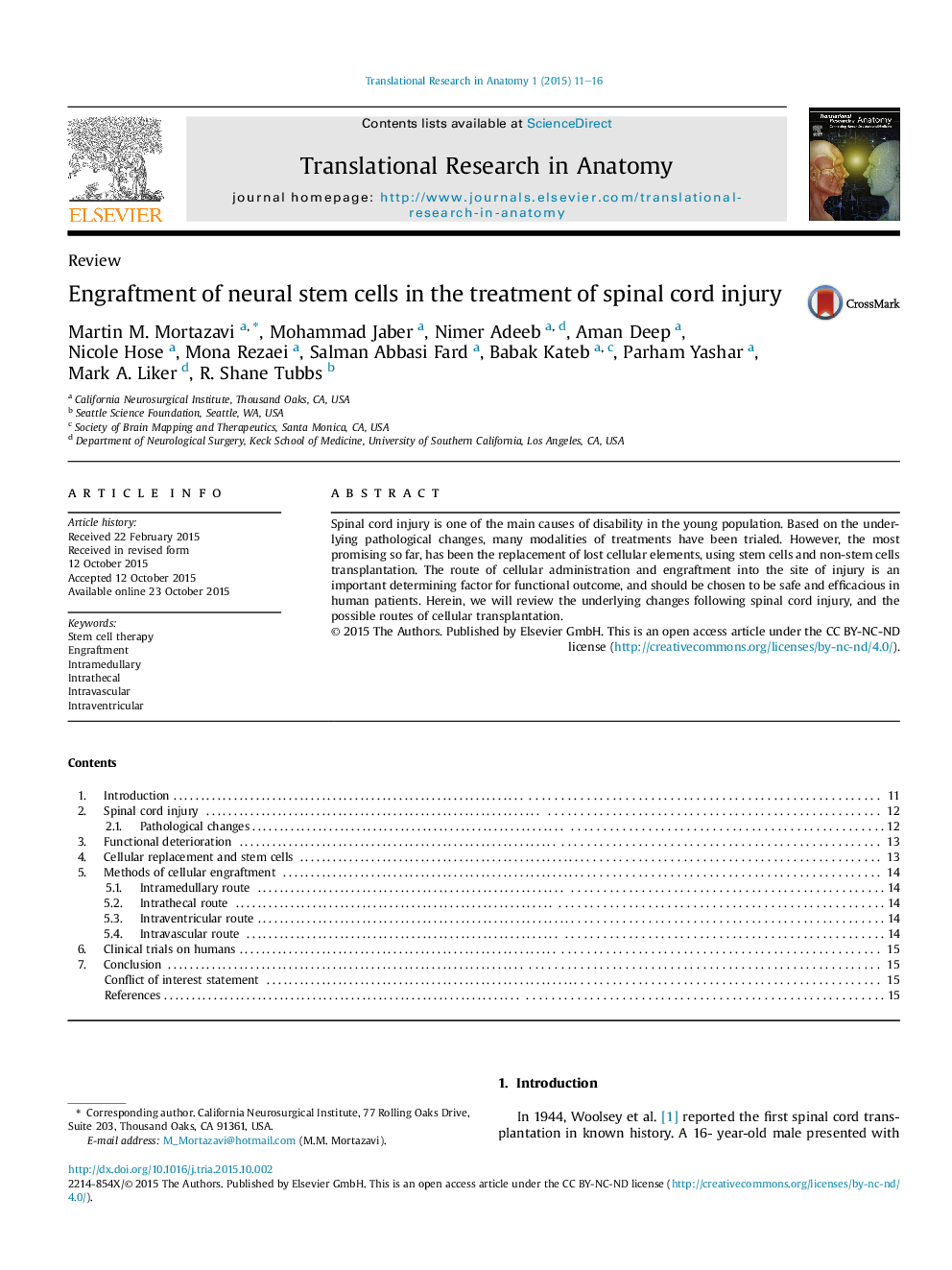| Article ID | Journal | Published Year | Pages | File Type |
|---|---|---|---|---|
| 3278488 | Translational Research in Anatomy | 2015 | 6 Pages |
•Spinal cord injury is one of the main causes of disability in the young population.•Replacement of lost cellular elements via stem cells transplantation has been one of the most promising modality of treatment.•The route of cellular administration and engraftment into the site of injury is an important determining factor for functional outcome.•Four routes have been used in most studies, which are in order of efficacy and invasiveness: the intramedullary, intrathecal, intraventricular, and intravascular routes.
Spinal cord injury is one of the main causes of disability in the young population. Based on the underlying pathological changes, many modalities of treatments have been trialed. However, the most promising so far, has been the replacement of lost cellular elements, using stem cells and non-stem cells transplantation. The route of cellular administration and engraftment into the site of injury is an important determining factor for functional outcome, and should be chosen to be safe and efficacious in human patients. Herein, we will review the underlying changes following spinal cord injury, and the possible routes of cellular transplantation.
Graphical abstractFigure optionsDownload full-size imageDownload as PowerPoint slide
